

NGC 2903 is a spiral galaxy in the constellation Leo. Click here for a finding chart. It was first discovered in 1784 by William Herschel, who catalougued it as H I.56. Messier narrowly missed it when he was compiling his catalogue (Frommert, Hartmut 1998;).
NCG 2903 is classified as a SAB(rs)bc spiral galaxy (D,Tschoke, 2003) according to the deVoucouleurs system, and has a hubble classification of Sb (Frommert, Hartmut 1998;)
The hubble classification system:
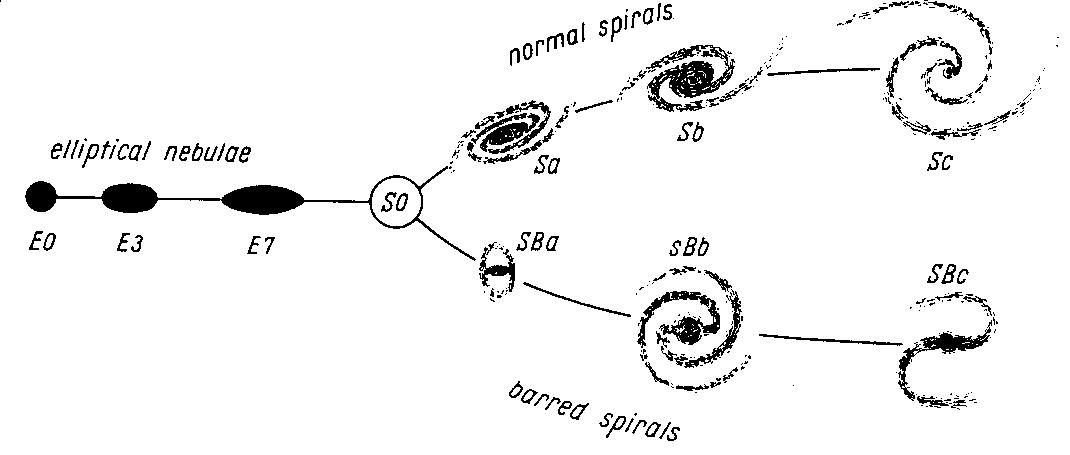 |
| Image from here. The Hubble system for spiral galaxies is based on the tightness of the arms. Basically, the more "spirally" the arms and the smaller the bulge compared to the disk, the farther its letter is on the alphabet. For a much better explaination click the link at the beginning of this paragraph. |
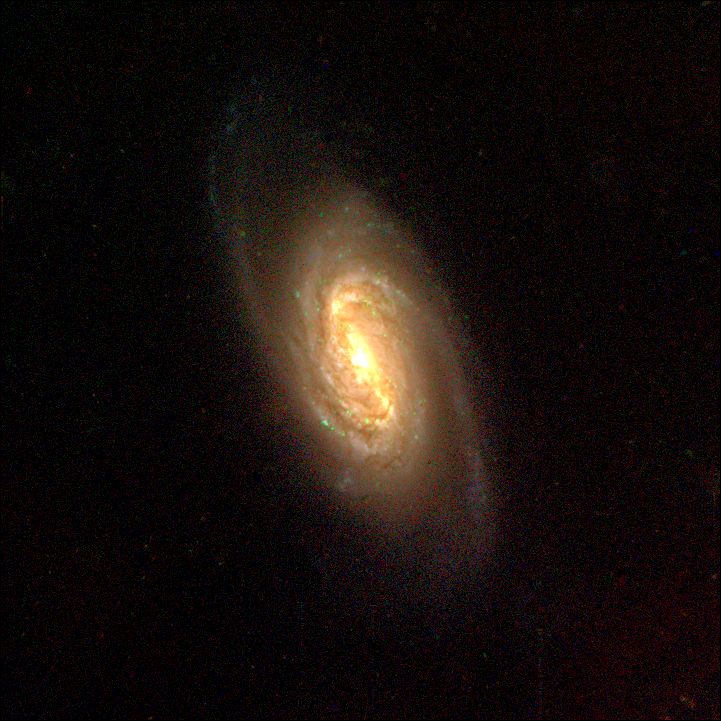 |
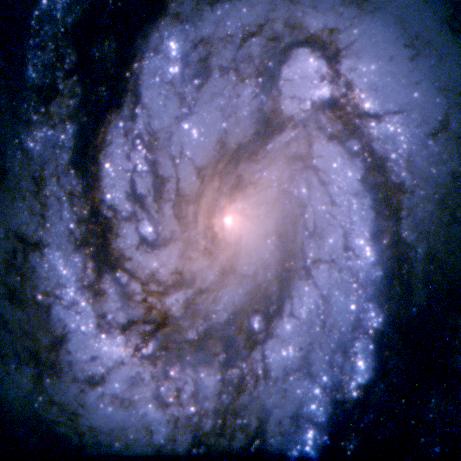 |
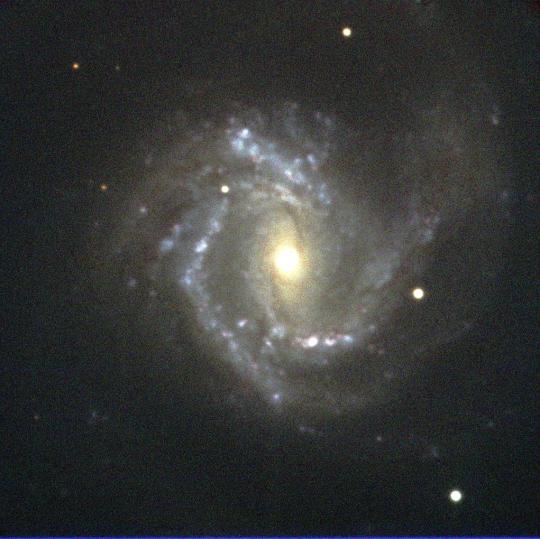 |
| Palomar 1.5 m image from here | HST image of M100 from here | Faulkes Telescope image of M61 from here |
 M100 and M61 are listed as SABbc (Dyer, Alan 2006) types like NGC 2903. All three galaxies have the same characteristic S-shape (image left, sketched from NGC 2903 image above) though in M100 it is much harder to tell because the spiral arms are so thick and "fluffy". The relative s-shape seems to demonstrate that the spiral arms are all about as loosely held (ie, as opposed to tightly coiled about the nucleus), even though M61 and NGC 2903 have wider dust lanes ("gaps" between spiral arms). NGC shows two of its spiral arms extending out quite a distance tangentially from its disk, a feature that neither of the other two show.
M100 and M61 are listed as SABbc (Dyer, Alan 2006) types like NGC 2903. All three galaxies have the same characteristic S-shape (image left, sketched from NGC 2903 image above) though in M100 it is much harder to tell because the spiral arms are so thick and "fluffy". The relative s-shape seems to demonstrate that the spiral arms are all about as loosely held (ie, as opposed to tightly coiled about the nucleus), even though M61 and NGC 2903 have wider dust lanes ("gaps" between spiral arms). NGC shows two of its spiral arms extending out quite a distance tangentially from its disk, a feature that neither of the other two show.
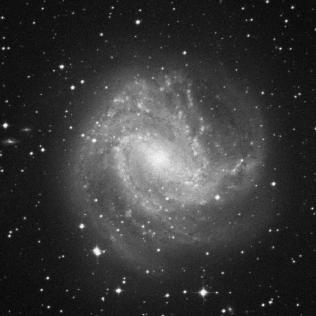 |
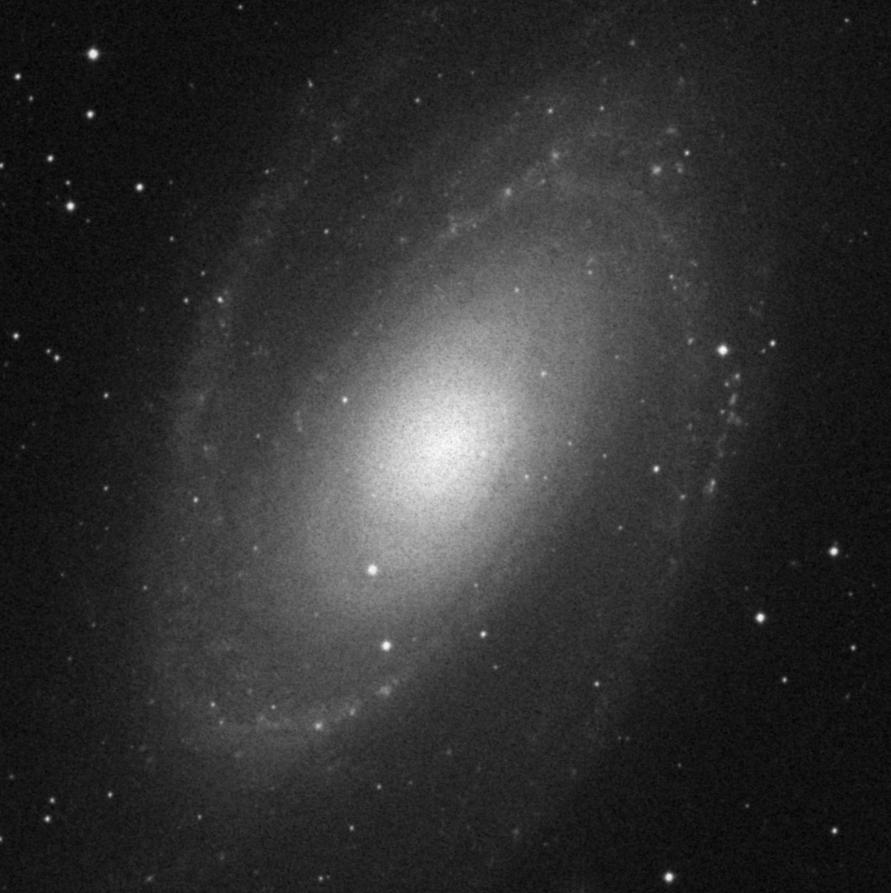 |
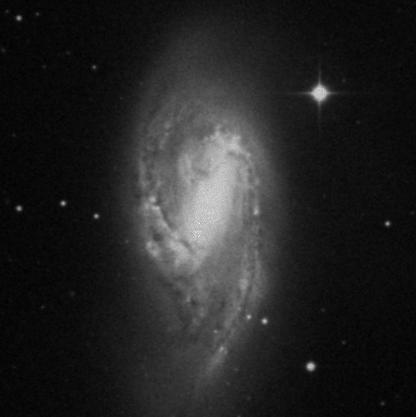 |
| Red image of M83 from STScI DSS | Red image of M81 from STScI DSS | Red image of M66 from STScI DSS |
M83 is a SABc spiral, M81 is a SAab spiral, and M66 is a SABb spiral. (Dyer, Alan 2006). In comparison with NGC 2903, the S shape in M83 is more fluid, and flows smoothly from the central bar instead of having a sharp "break" at either end. M81 doesn't have a bar, and so less of that characteristic S shape, and the bulge is larger in proportion to its disk than NGC 2903. But M81 does show the two spiral arms extending out tangentially. M66 also has this feature, but again, the bulge is much larger in proportion to its arms than NGC 2903. Its arms are also more loosely wound.
At this time I have been unable to find relative luminosities for this object.
I have been able to find three spectra from the NASA/IPAC Extragalactic Database direct link to all three here.
 |
| Instrument: Palomar 200 in, Optical Wavelengths from 4222.0 to 5090.4 angstroms (10^(-10) m), region of nucleus, size 2.0x4.0 arcseconds |
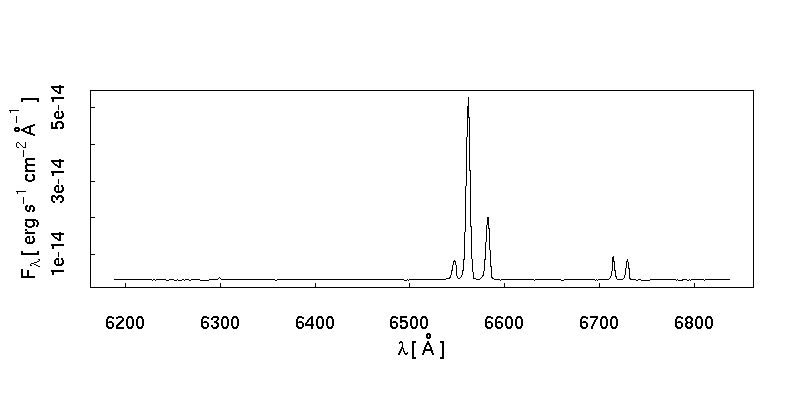 |
| Instrument: Palomar 500 in, Optical wavelenths from 6188.3 to 6837.1 angstroms, nucleus region, size 2.0x4.0 arcseconds |
 |
| Instrument: IUE, Ultra Violet wavelengths 1100.2 to 3299.2 angstroms, nucleus region, aperature size 10.0x20.0 arcseconds |
NGC 2903 is what is called a "hot-spot" nucleus galaxy. Hot-spots are defined as "spheroidal or extended structures uniformly and symmetrically disposed in a definite region" (Sersic, J. L. 1965). A good portion of the studies of this galaxy have focused on trying to determine the nature of these spots. They show very brightly in the blue end of the spectrum, yet are also bright in near infrared, and compose a region ~ 24 x 8 arcseconds (Oka,S. 1974) at the galaxy's center. Previous studies have also shown that there appears to be intense star formation occuring in the central region, though, according to a recent study, apparently most of it is not in the hot-spots themselves (A,Alonso-Herrero, 2001). What these spots might be will be included in the Modern Knowledge section, along with some other data tidbits.
• Back • Introduction • Knowledge • Images • Question •
• References • Index •
_________________________________________
Banner image is a slice of HST image by NASA/ESA.